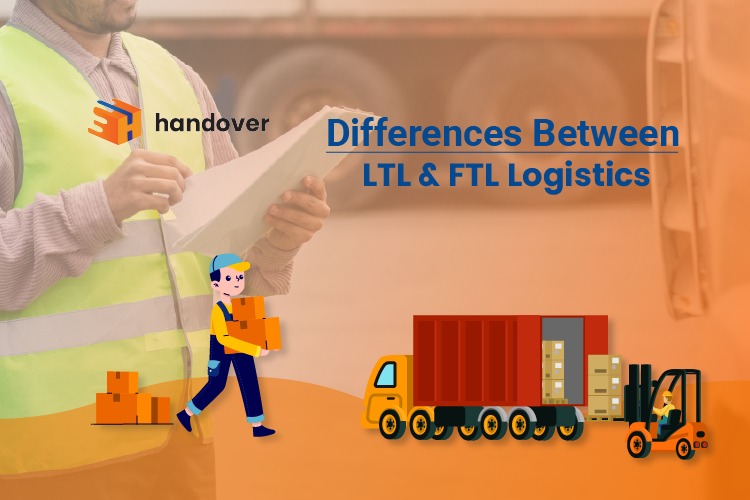Handover news
Blog
Differences Between LTL and FTL Logistics

There are lots of differences between Less-than-Truckload (LTL) and Full Truckload (FTL). And one of the biggest ones is that LTL helps businesses save a lot of money while delivering products to their customers. This is a cheaper way of transportation for retailers because they are only paying for products covering space in trucks.
When comparing delivery times, there are significant differences between LTL and FTL. Delivery is highly predictable with a full truckload because products will be picked up and driven directly to customers. For LTL delivery, the actual delivery time may differ significantly from the predicted delivery time because LTL delivery does not go directly to one customer due to the various stops they must make for delivering products to other customers. FTL delivery provides a delivery time estimate. Because they are only carrying products for a specific customer.
Another difference is that with a full truckload, logistics companies will load products from stores and take it directly to their customers. On the contrary, with an LTL delivery, products will be loaded and unloaded several times from trucks before reaching the destination. This means logistics companies need to handle products several times. This could damage sensitive or fragile products.
How to Optimize LTL and FTL?
There are specific situations in which LTL or FTL should be used. As a business owner, you can choose the one according to your requirements. However, there are several situations in which full truckload transportation may be more suitable than LTL.
The full truckload delivery option is likely to be the best for businesses delivering an extensive volume of goods. It will further help if the product is fragile where constant loading and unloading must be prevented. Incessantly loading and unloading during delivery can damage fragile products.
Business owners wanting to deliver products on time must opt for a full truckload delivery. Because it ensures products are delivered directly to their customers. There are no other products loaded on trucks.
The LTL delivery method is cost-effective when delivery volumes are less. It will suit businesses further if they have the flexibility in delivery times..
It is crucial to be aware of the products that can sustain damage during delivery. There should be proper product packaging to avoid damage during the delivery process.
The Advantage of Delivering Products Using LTL and FTL Services
Deciding and understanding which of these two delivery options is best for businesses is crucial. Because, when partnering with a third-party logistics company for delivering products, businesses must wisely choose the options of LTL or FTL delivery service especially with time sensitive deadlines regarding product deliveries. Third-party Logistics (3PL) companies provide various advantages for businesses looking to deliver products in the most competitive market. The following are some advantages of using a 3PL delivery service in Noida, Mumbai, Bangalore or any other city in India.
Expertise
Many 3PL companies are capable of delivering products using LTL and FTL. They have the experience to decide how to manage deliveries. A 3PL company helps retailers deliver products to their customers and have visibility into various items, problems that help them carry out efficient product deliveries.
Cost-effective
Retailers might be accustomed to deliver a few products each month to a smaller area, while a 3PL is delivering a significantly higher volume across the country on a daily basis. When using 3PL delivery service for delivering products, businesses can negotiate rates also. Therefore, businesses can ensure cost-effective deliveries when collaborating with a third-party delivery service provider.
Visibility
Businesses must make sure whether products get delivered smoothly or not to customers. So, 3PL companies such as handover offer businesses a real-time tracking system, helping them track the entire delivery process. Using a real-time tracking system helps businesses get details such as delivery starting time, where the delivery fleet remains at a given point of time and when it will reach its final destination.
Conclusion
As we have seen, there are lots of differences between the LTL and FTL delivery processes. Using either of them totally depends upon the product’s volume. Businesses must consider using FTL to deliver high volumes of goods and LTL when having to deliver less. handover, a leading third-party delivery service company in India, uses trucks for delivering products across various cities in India.
